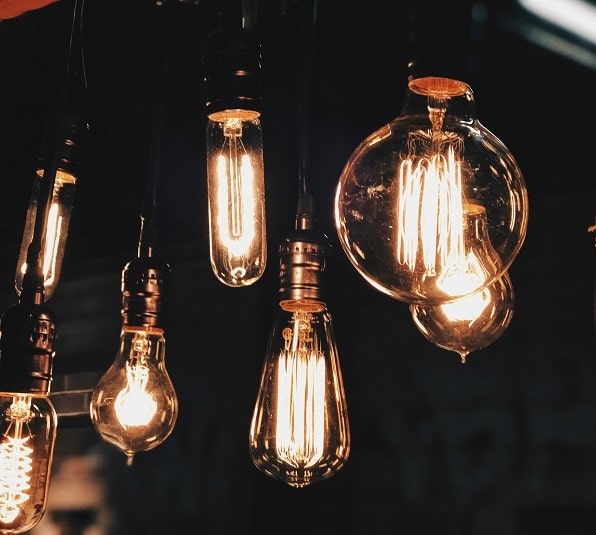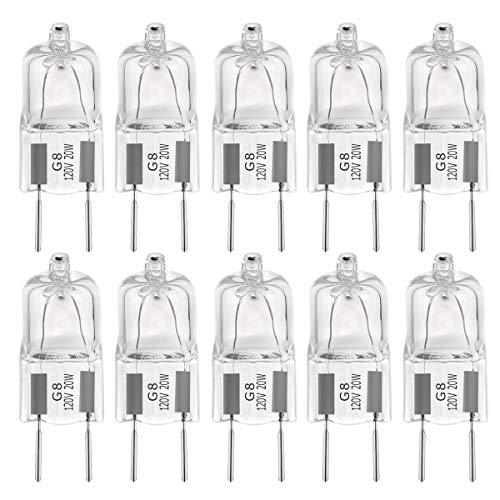by Linea Lorenzo
Taking care of the lighting situation in your home is all about understanding what light bulb models are currently out there in the market.
While you can simply opt for the old-fashioned incandescent models, there is a whole array of different light bulb models on the market out there that work on some new principles, so looking into these and buying them in favor of the old ones can not only save you a lot of energy ( and thus also money ) but provide you with a new type of light temperature, for example.
The thing is, light bulbs nowadays come in a wide variety of shapes and sizes, so there's a wide array of models you can choose from in case you're interested in trying out something new. In this article, we are going to talk about different types of light bulbs and what makes each of the models unique. As you will see, there are pros and cons to each of the light bulb types we're going to talk about, so there's a type in here for everyone's taste and needs.
Contents
Right then folks, without further ado, here's the deal.


Before we start, let us just say that these six types we're going to talk about represent the different light bulb models according to their way of functioning. When it comes to the shape, intensity, and other parameters, we won't go into details because it would be impossible to address all of the individual light bulb models out there.

Representing the old types of light bulbs on the market, the incandescent models represent the sort of light bulb that works on the principle of heated metal wire that then gives out light.
So, in order for this to work, manufacturers pick metals with as bad electrical conductivity as possible, because those give away the most heat. Once the thin wire inside the bulb heats up, the wire starts to shine, and the light is usually yellowish. Of course, if the outside of the bulb is painted some other color, the light will emanate that color and project it instead.
As far as the area inside the bulb and around the wire itself, it's most commonly vacuumed although some manufacturers fill it with nitrogen. These bulbs can last you anywhere from 700 to 1,000 hours, depending on how often you use them. ( Switching them on and off in itself stressed the bulb. )
In today's market, these bulbs are known for their low price and availability, but not so much for longevity. Incandescent light bulbs also lag behind in the department of light intensity and energy consumption, which is why they are rapidly getting replaced by LED or fluorescent models.

When it comes to the mode of functioning, the fluorescent light bulbs are perhaps the most complex ones due to the combination of gasses and specific coating they require to function.
If we take apart the way these bulbs work to brass tacks, however, what you'll get is a certain volume of mercury and some other gasses within an enclosed space than is then activated by electricity that passes through the cathodes inside the body of the bulb.
Now, the outside of the bulb itself is covered in a special layer of phosphorous, which emanates light when it comes into contact with the aforementioned gasses from the inside of the bulb body.
What makes these bulbs popular is the fact that they don't use up as much energy as their incandescent counterparts, they scale fairly well (so, they can make them quite big), and they work wonders for large areas such as halls, train stations, public spaces, and other venues that need a bright source of light.
On the flip side, these can be difficult to dispose of when they do stop functioning eventually - mostly due to the dangerous gasses inside.
As we've said in the section above, fluorescent lamps are typically a good option for public spaces and large indoor areas, but here's the thing - they also can be used as a replacement for the old incandescent models in the domestic environment, so to speak.
Of course, the fluorescent bulbs produced for homes usually come in a smaller form and you can easily recognize them by their curly shape.
As far as the principle of functioning is concerned, these work in pretty much the same way the ordinary fluorescent bulbs do. What you get inside the bulb itself is a certain amount of reactive gas such as mercury, which is then activated by electrical current. The outside of the bulb is covered by some sort of substance that glows when it comes in contact with the active gases from within, and that's it.
Similarly to their larger brothers, so to speak, CFLs are more energy-efficient than the incandescent models, are fairly easy to set up, shine brighter, last longer, and offer a cooler color temperature. On the other hand, disposing of these remains tricky just as the case is with the larger fluorescent light bulb models.

Fairly similar in construction to the incandescent light bulbs, halogen lamps feature a small improvement over the well-known design.
Namely, as we've already said above, incandescent models feature a piece of thin wire made out of tungsten or some other sort of suitable metal, through which electrical current goes, and which then produces light when it heats up. ( Which happens instantly, of course. )
Now, the deal with halogen models is fairly similar. What happens here is that these light bulbs feature a small transparent envelope full of Halogen gas. So, what happens when the electricity goes through these is that they function in much the same way the incandescent models do, but the Halogen filling makes the light brighter than just an ordinary incandescent model.
Overall, Halogen bulbs tend to last longer than their incandescent cousins. They're also smaller and shine slightly brighter. On the other side, these bulbs and lamps are more expensive than the incandescent models, and they also burn at a higher temperature than these.
An important thing to remember about halogen bulbs is that they're fairly sensitive to touch, so you have to be extra careful when fitting them.

Representing the most popular type of light bulb nowadays, LEDs are a sort of bulb that uses a bunch of tiny LEDs ( stands for 'light-emitting diode' ), to create light.
What makes these light bulbs special would be the fact that these diodes are semi-conductors, meaning they require considerably less energy than their incandescent counterparts.
For comparison's sake, these are also way more efficient than the halogen bulbs, as well as the fluorescent ones.
Another interesting feature of these light bulbs would be that they don't require any sort of special coating to function properly, as these can change light on their own. All you need to do is set up a special batch of three diodes that each produce a single color, and then control the color by using the controller to send the electrical impulses through different pathways.
LEDs have become popular in recent decades due to their versatility, low price, as well as longevity when compared with virtually any other type of light bulb out there. What's more, these come in all shapes and sizes, so you can get a lamp for your kids' room that's made up of LED's, as well as buy headlights for your car built in this technology.

Closely related to their cousins the halogen bulbs, Xenon bulbs represent a category of light bulbs that's slightly more complex than the standard incandescent ones. As with the Halogen light bulbs, the whole idea with these Xenon ones would be that there's a thin metal thread going through these bulbs which conducts electricity.
Now, in the case of Xenon light bulbs, the gas surrounding the wire with the electricity would be Xenon instead of Halogen, but the effect is roughly the same. When compared to the standard incandescent models, these Xenon light bulbs save more energy, last relatively long, and shine fairly bright, cool light.
In fact, it is said that Xenon light bulbs give out light that's as close to natural light as possible, so if your main concern when buying light bulbs is to make them shine bright during the night ( or in circumstances of reduced light ), you can rest assured that these will provide you with as close a replacement for the Star as it is possible.
On the downside, of course, as is the case with all other types of bulbs with gas in them, these are also a nuisance to dispose of, because of the potentially harmful chemicals escaping from them if they burst. Also, the cost is another parameter that tends to stack up against these when compared to other types of light bulbs. ( Especially against the incandescent ones, that is. )
All in all, as you have seen, light bulbs come in several different forms, and it could be said with a degree of certainty that more and more people are opting for the more durable and economical LED over any other type of light bulb out there. We hope this article helped you understand the different types of light bulbs and we wish you a hassle-free purchase if you plan to get any of these.
 |
 |
 |
 |

About Linea Lorenzo
Linea was born to love drawing and just a few tech gadgets. While not working or sleeping, he often spends hours to look through the coolest, latest gadgets at different shopping sites, drooling about them. He also likes to keep things clean and tidy - now that the reason you see so many cleaning devices and electronics reviews at linea.io. Ah yes, he made the site also just for that. Occationally, he invited friends to share their expertise around here too. Linea received Bachelor of Arts in Arts & Letters at Sacramento State University.
 |
 |
 |
 |
You can Get FREE Gifts. Furthermore, Free Items here. Disable Ad Blocker to receive them all.
Once done, hit anything below
 |
 |
 |
 |